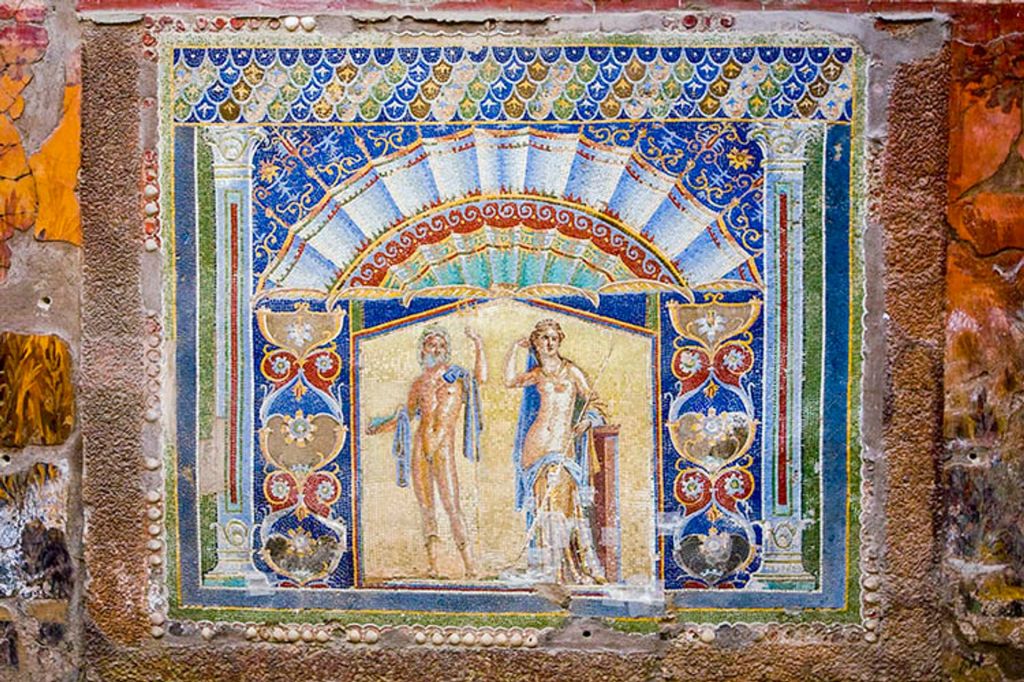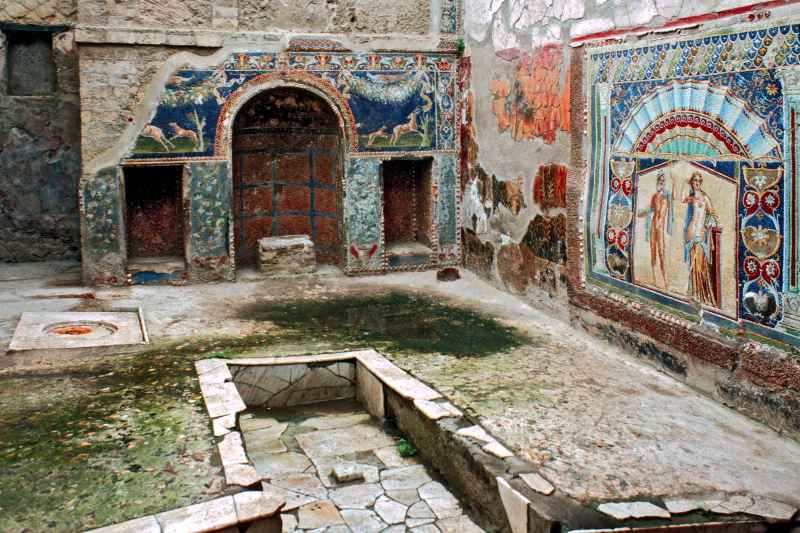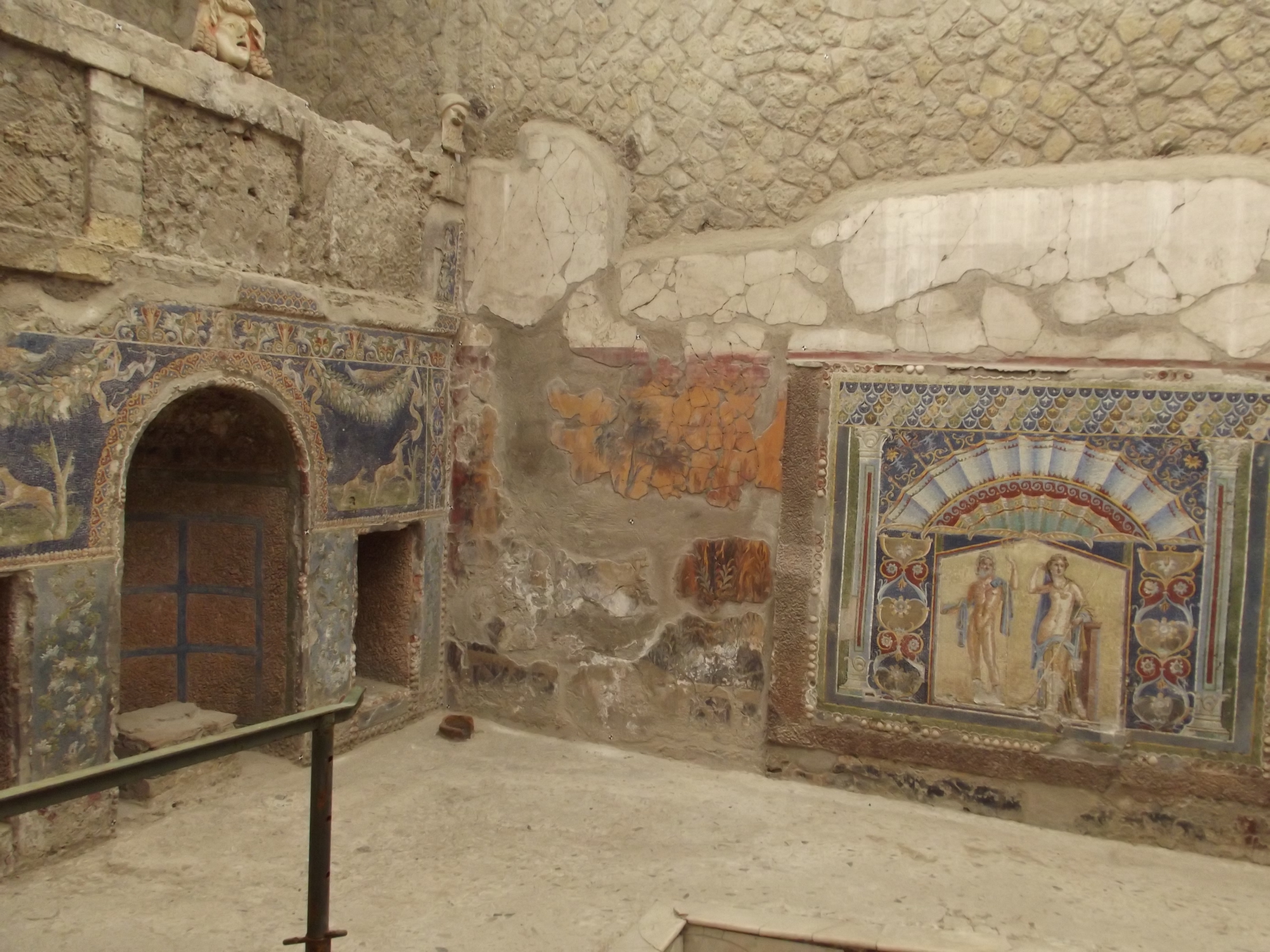Table of Contents
ToggleThe House of the Neptune Mosaic
Among the notable buildings in Herculaneum is the House of the Neptune Mosaic. Despite its relatively modest size, this residence is richly adorned and believed to have belonged to a wealthy family. The house features intricate mosaics, including a stunning depiction of Neptune and other marine figures. These artworks not only highlight the artistic skills of the period but also reflect the affluence and social status of its inhabitants.

Wealth and Lifestyle Reflected in Art
The decorations in the House of the Neptune Mosaic exemplify the wealthy lifestyle enjoyed by some residents of Herculaneum. Luxurious furnishings and intricate wall paintings further reveal the tastes and customs of affluent families. This house, alongside others in Herculaneum, provides a window into daily life, social hierarchy, and cultural practices in ancient Rome.

Preservation and Archaeological Significance
Herculaneum’s preservation is notably more profound than that of Pompeii, largely due to the nature of the volcanic material that encapsulated organic materials. This preservation has created a richer archaeological record, allowing modern archaeologists to study Roman architectural techniques and domestic arrangements in detail. The intact structures provide critical context for understanding urban life in the Roman Empire.

Ongoing Conservation Efforts
The Herculaneum Conservation Project plays a vital role in maintaining these historic sites. Their work ensures that this glimpse into the past remains accessible for future generations. The project focuses on both conservation and research, contributing to our understanding of Roman society and its intricate cultural fabric.

Conclusion
Today, Herculaneum stands as a testament to the artistic, architectural, and social complexities of ancient Rome. The House of the Neptune Mosaic, along with the town’s other preserved structures, invites visitors and scholars alike to explore the rich tapestry of life in the ancient world.

